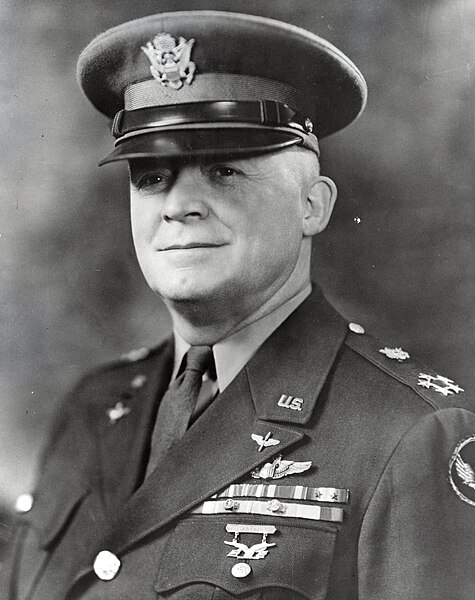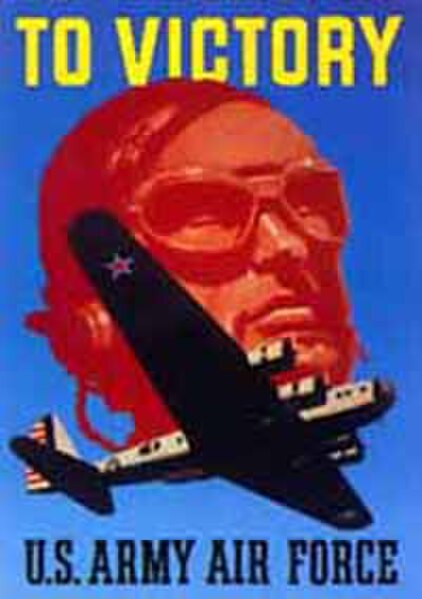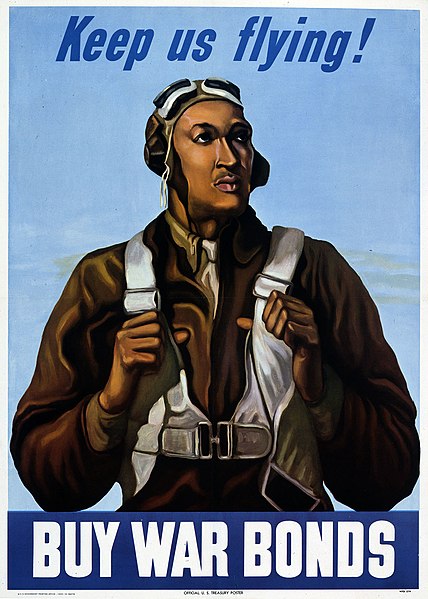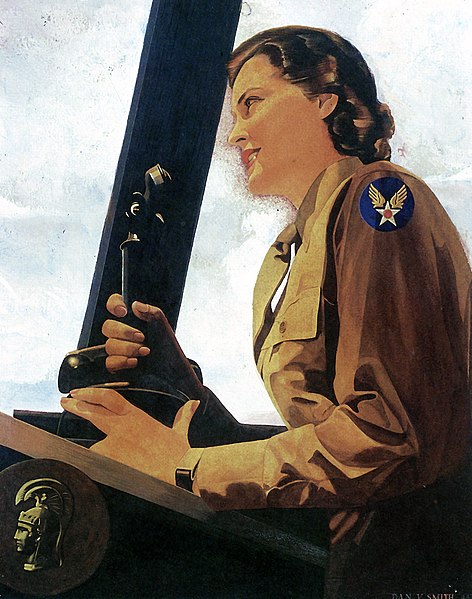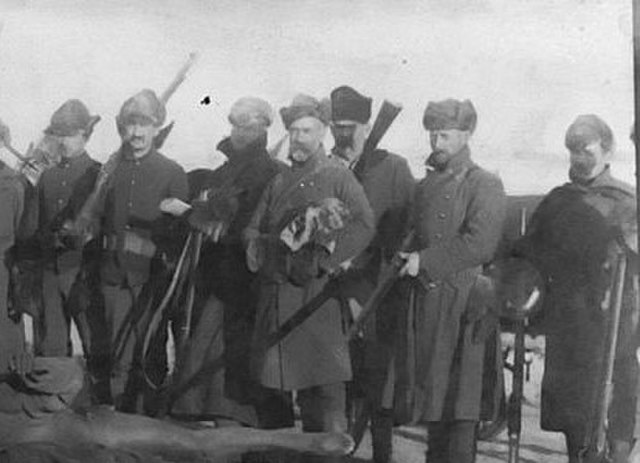United States Army Air Forces
The United States Army Air Forces was the major land-based aerial warfare service component of the United States Army and de facto aerial warfare service branch of the United States during and immediately after World War II (1941–1947). It was created on 20 June 1941 as successor to the previous United States Army Air Corps and is the direct predecessor of the United States Air Force, today one of the six armed forces of the United States. The AAF was a component of the United States Army, which on 2 March 1942 was divided functionally by executive order into three autonomous forces: the Army Ground Forces, the United States Army Services of Supply, and the Army Air Forces. Each of these forces had a commanding general who reported directly to the Army Chief of Staff.
General of the Army Henry H. ("Hap") Arnold
USAAF recruitment poster
Tuskegee Airmen War bonds poster
1943 portrait of WAC air controller
The United States Army (USA) is the land service branch of the United States Armed Forces. It is one of the eight U.S. uniformed services, and is designated as the Army of the United States in the U.S. Constitution. The Army is the oldest branch of the U.S. military and the most senior in order of precedence. It has its roots in the Continental Army, which was formed on 14 June 1775 to fight against the British for independence during the American Revolutionary War (1775–1783). After the Revolutionary War, the Congress of the Confederation created the United States Army on 3 June 1784 to replace the disbanded Continental Army. The United States Army considers itself a continuation of the Continental Army, and thus considers its institutional inception to be the origin of that armed force in 1775.

The storming of Redoubt No. 10 in the Siege of Yorktown during the American Revolutionary War prompted Great Britain's government to begin negotiations, resulting in the Treaty of Paris and Great Britain's recognition of the United States as an independent state.
General Andrew Jackson standing on the parapet of his makeshift defenses as his troops repulse attacking Highlanders during the defense of New Orleans, the final major and most one-sided battle of the War of 1812, mainly fought by militia and volunteers.
The Battle of Gettysburg, the turning point of the American Civil War
Army soldiers in 1890

